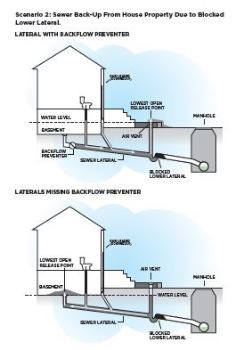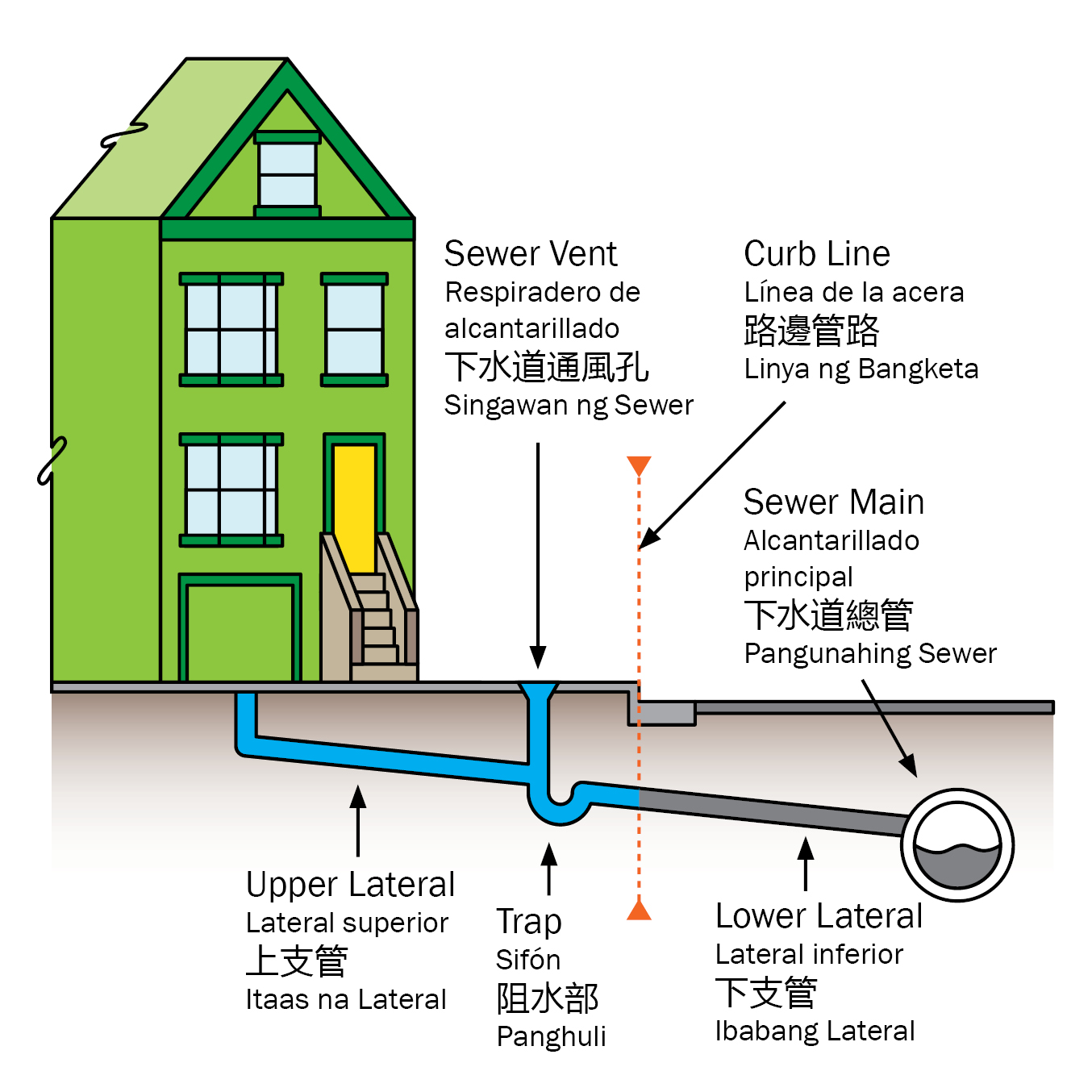Sewer Laterals
Keep your sewer lateral in good condition and help reduce the risk of sewer backups.
How to Protect your Property and Environment?
Never let fats, oils or grease go down the drain; compost it instead. Dumping grease down the drain can clog the sewer pipes, result in back-ups or overflows onto your property or streets, foul odors, and costly damage to sewer infrastructure.
Remember that your toilet is an only-human-waste-and-toilet-paper-zone. Nothing, except the 3 P’s (pee, poop and toilet paper), go down the drains.
Upper Lateral Responsibility:
The upper sewer lateral is an extension of your home, even if you can’t see it, which means you're fully responsible for it. That’s why we encourage property owners to inspect and keep their lateral clear of trash, grease and other materials (anything except human waste or toilet paper) that can clog and damage pipes. Property owners are responsible for maintenance, including clearing and jetting the pipe to keep the pipe clear and in good working order.
If the pipe is found in bad condition, property owners must also repair and replace according to latest San Francisco Plumbing Codes. Check out the Sewer Lateral Standards for property owners, contractors or developers.
Lower Lateral Responsibility:
You are responsible for maintaining it, including clearing and jetting the pipe to keep it clear and in good working order by regularly clearing it or inspecting it using Closed Circuit Television (CCTV) to identify any defects. And of course, by not putting trash, grease, cooking oil, or other materials down household drains.
Please notify lower lateral issues and any potential need to repair or replace it to the San Francisco Public Utilities Commission (SFPUC) by calling 3-1-1 or submitting a service request online at sf311.org.
-
Do you need a sewer backwater valve?

Scenario 1: Sewer Back-Up From Main Sewer Due to Surcharging What is sewer backflow protection?
Sewer backflow protection typically utilizes a backwater valve (aka “backflow prevention device”) on drainage pipes to protect the building from sewer backup. The backwater valve is designed to automatically shut when water flows towards the property. See the two scenarios on the right where a backwater valve can protect the building from a sewer backup.
Does my property need a backwater valve?
Most properties have been built so that an obstruction in the public sewer or sewer lateral between the curb and sewer main should not cause a sewage backup into the property. However, some properties require the extra protection of a backwater valve within the owner’s property. Typically, these properties have been built so that the drain of the lowest plumbing fixture (shower, floor drain, toilet, etc.) is lower than the air vent (aka “fresh air inlet”) of the sewer lateral.
Consider installing a backwater valve.

Scenario 2: Sewer Back-Up From House Property Due to Blocked Lower Lateral If your property appears to require a backwater valve, we strongly encourage you to consider installing one. The San Francisco Department of Building Inspection Plumbing Division will be able to provide the following:
- further guidance on whether your property should have a backwater valve and
- directions on how to properly install a backwater valve.
Please visit their website at https://sfdbi.org/backflow-preventer.
You may also be be eligible for our Flood Water Management Grant Assistance Program.
Be sure to maintain your backwater valve!
If you have a backwater valve, or decide to install one, please note that it must be checked to ensure that it is operating properly at all times. Debris in the drain line or other problems can easily damage or interfere with backwater valves. Follow the manufacturer's recommended maintenance instructions and schedule. It is best practice to conduct maintenance before every rainy season.


